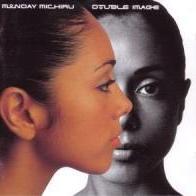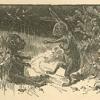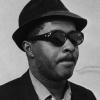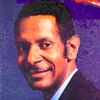Search the Community
Showing results for 'Patty+Waters'.
-
Nice to hear your thoughts on KD, Mr. Weiss. As to JALC and "regional" survival...from personal experience in and around Grand Rapids, MI...can't say that it is directly true. There are tiers to hiring touring groups and the venues that would have previously hired, say, a Columbia Artits Touring Package with Joe Williams and George Shearing and Joe Pass all on the same bill, for instance, The Gathering of Friends tour, would now be hiring JALC Big Band, as they have: Congo Square played Grand Rapids in '08 (DeVos Hall) and Branford in '06, maybe, Meijer Gardens . But that level, that price and audience size, never really impacted what went on at the mid-sized theaters around town, or the non-profits, let alone restaurants. Local musicians could manage to mount a larger concert if they had the gumption and hustle to make it happen, if they could talk The West Michigan Jazz Society into it. JALC wouldn't really effect that. Right now there are two big bands that play nothing but a jazz book in West Michigan and at least two more who play a swing book with jazz. Can't say that's much changed over the last 25 years. If fact, it is an improvement. There was always The Grand Rapids Jazz Orchestra, essentially, and The Truth in Jazz Orchestra is a great addition to Muskegon. The Beltline Big Band has been going for 9 years now thanks in large part to the swing dance revival. I mean, while serving on the music committee/board at both the Urban Institute for Contemporary Arts and St. Cecilia Music Society that wasn't/isn't an issue. UICA is a small venue flexible enough to grab avant garde jazz bands -- Steve Lacy, Vinny Golia, Rova, even Lee Kontiz -- while on the road and give them a Thursday night or weekend afternoon and I was able to pull musicians out of Chicago for shows here over a 15 year period, which ended when we had kids and that type of volunteerism became impossible. Other producers there who took it more mainstream would be presenting Patty Barber or Fred Hersch. The non-profit, 120 seat theater and artists who were affordable for that scene had nothing to do with JALC. Randy could bring his craziest music in there, or The Northwoods Improvisers from Mount Pleasent could make a go of it. The JALC musicians often played in local college or high school concerts over the same period. The educators especially champion them. St. Cecilia, which is primarily a classical music venue with a 600 seat theater, has one big expensive concert a year that occurs outside of their classical and jazz series concerts, and that's where you'll find JALC or Branford's band playing, or the Julliard String Quartet. The trouble with St. Cecilia bookings is that there just aren't as many jazz "stars" a place such as Grand Rapids recognize or know enough about to fill the place. It takes an across the board appeal to make a jazz audience: old/young, black/white, well off and working class. If you're just getting one aspect of that mix, that just won't make it. So artists who appeal in the broad sense and have any commercial value are harder to come by. Joe Lovano and Kurt Elling recently did ok, not sell outs, but close. Bill Frisell and Jim Hall were scheduled this fall (Hall was replaced at the last minute by Russell Malone) and there may have been 300. Now in the past Ramsey Lewis, Billy Taylor, Ahmad Jamal and even Oliver Jones could fill the place up, but as they age and their fees rise, there aren't as many musicians with a "name" who can step in and fill the house who are affordable (say $10,000 - $12,000 for everything: fee, hotel, travel). The State Theater in Kalamazoo seemed un-affected by this aspect of JALC, too. Yes, I don't doubt they've sucked the air out of a lot of places which in part explains this phenomenon of fewer jazz "stars," yet at the same time, without that -- without Wynton and Branford and their activities pulling in all the school kids, as well as middle of the roaders who know about them from television, plus the black audience -- it's tough to find jazz instrumentalists with "star" power these days. Rollins, Herbie, Brubeck -- very expensive now. Was pretty shocked by the audience pianist Marcus Roberts drew up in Sutton's Bay, Michigan, a year ago. Big, for a small resort town, and wildly enthusiastic. Mentioned to Jason Marsalis that I was M.C.ing then joked they might not be able to trust me up there because of my love of Cecil Taylor's music. We talked about that a bit and Jason basically said, after admitting his respect for Taylor and Ornette etc., that they're from "another generation." It's within this generation, musicians in their 40's or so, that they were most concerned with knowing who James P. Johnson was, for instance. In any case... This is not the best time to judge audience size in Michigan. The state's been in recession since 2000 and now...the Lions can make it 0-16 today, the perfect metaphor for Goldman Sacks Socialism.
-
Perhaps my favorite new release in a non- jazz vein is Patty Loveless's "Sleepless Nights"
-
I was rather taken by Devorah Day's Light of Day a few years back, but it doesn't seem that that many others were. But hey. Strong Seconds on the Patty Waters You Thrill Me disc as well. Some of that stuff is as cut-to-the-quick real as it can get. Sarah Vaughn - Swingin' Easy This is what Sarah did, done about as well and as unencumbered as she ever did it save for maybe some of those Musicraft sides. Billie - All Or Nothing At All At the end of the day, this is the one I keep coming back to. The fifth? Whatever is handy (and right) at the time, when the time comes, if it does. some good people already mentioned, too many others not to narrow it down to just one.
-
Freddy Adu Peppermint Patty Charlie Rose
-
One of the dogs at my Sister-in-law's house managed to scratch the screen of their flat-screen TV. Anyone know if there is a product that might allow her to buff out the scratch or somehow fix it? Her Aunt, who paid for the TV, is on a cruise with Mom but when she returns she will likely kill Patty and the dog, so any help is greatly appreciated!
-
Danielle Steel Boonyasak Chermarn Patty Loveless
-
Marzette Watts (ts) Bill Dixon (p-1) Juney Booth (b) J.C. Moses (d) Play it straight (1) F.L.O.A.R.S.S. Joudpoo George Turner (cnt) Marty Cook (tb) Marzette Watts (ts) Bobby Few (p) Frank Kipers (vln) Cevera Jefferys, Steve Tintweiss (b) Tom Berge (d) Patty Waters, Amy Sheffer (vcl) Lonely woman (fk,as out) October song Medley Recorded in the fall of 1969 ; Released on Savoy MG 12193 Wow! Thanks Chas.
-
Marzette Watts (ts) Bill Dixon (p-1) Juney Booth (b) J.C. Moses (d) Play it straight (1) F.L.O.A.R.S.S. Joudpoo George Turner (cnt) Marty Cook (tb) Marzette Watts (ts) Bobby Few (p) Frank Kipers (vln) Cevera Jefferys, Steve Tintweiss (b) Tom Berge (d) Patty Waters, Amy Sheffer (vcl) Lonely woman (fk,as out) October song Medley Recorded in the fall of 1969 ; Released on Savoy MG 12193
-
The New York Times Printer Friendly Format Sponsored By June 4, 2008 Alton Kelley, Poster Designer, Is Dead By WILLIAM GRIMES Alton Kelley, whose psychedelic concert posters for artists like the Grateful Dead, Jimi Hendrix, and Big Brother and the Holding Company helped define the visual style of the 1960s counterculture, died on Sunday at his home in Petaluma, Calif. He was 67. The cause was complications of osteoporosis, said his wife, Marguerite Trousdale Kelley. Mr. Kelley and his longtime collaborator, Stanley Mouse, combined sinuous Art Nouveau lettering and outré images plucked from sources near and far to create the visual equivalent of an acid trip. A 19th-century engraving from “The Rubaiyat of Omar Khayyam” inspired a famous poster for a Grateful Dead concert at the Avalon Ballroom in 1966 that showed a skeleton wearing a garland of roses on its skull and holding a wreath of roses on its left arm. The Grateful Dead later adopted this image as its emblem. Mr. Kelley and Mr. Mouse also designed several of the group’s album covers, including “American Beauty” and “Workingman’s Dead.” Mr. Kelley was born in Houlton, Me., and grew up in Connecticut, where his parents moved to work in defense plants during World War II. His mother, a former schoolteacher, encouraged him to study art, and for a time he attended art schools in Philadelphia and New York, but his real passion was racing motorcycles and hot rods. He applied his artistic training to painting pinstripes on motorcycle gas tanks. After working as a welder at the Sikorsky helicopter plant in Stratford, Conn., he moved to San Francisco in 1964, settling into the Haight-Ashbury neighborhood. With a group of friends he helped stage concerts at the Red Dog Saloon in Virginia City, Nev., by the Charlatans, a electric folk-rock band. On returning to San Francisco, he became a founding member of the Family Dog, a loose confederation of artists, poets, musicians and other free spirits who put on the some of the earliest psychedelic dance concerts, first at the Longshoremen’s Hall and later at the Avalon Ballroom. Mr. Kelley was in charge of promoting the concerts with posters and flyers, but his drafting ability was weak. That shortcoming became less of a problem in early 1966, when he teamed up with Stanley Miller, a hot-rod artist from Detroit who worked under the last name Mouse. The two formed Mouse Studios, with Mr. Kelley contributing layout and images and Mr. Mouse doing the distinctive lettering and drafting work. Often, they took trips to the public library in a search for images from books, magazines and photographs. “Stanley and I had no idea what we were doing,” Mr. Kelley told The San Francisco Chronicle last year. “But we went ahead and looked at American Indian stuff, Chinese stuff, Art Nouveau, Art Déco, Modern, Bauhaus, whatever.” One of their first posters, for a concert headlined by Big Brother and the Holding Company, reproduced the logo for Zig-Zag cigarette papers, used widely for rolling marijuana joints. “We were paranoid that the police would bust us or that Zig-Zag would bust us,” Mr. Mouse said. From 1966 to 1969, Mr. Kelley worked on more than 150 posters for concerts at the Avalon Ballroom and the Fillmore, publicizing the most famous bands and artists of the era, among them Quicksilver Messenger Service, the Butterfield Blues Band and Moby Grape, as well as the Dead, Big Brother and the Holding Company, Jimi Hendrix, and Country Joe and the Fish. They created three posters for concerts headlined by Bo Diddley, who died on Monday. With time, Mr. Kelley’s drawing improved, and the partners virtually fused into a poster-generating unit. “Kelley would work on the left side of the drawing table and Mouse on the Right,” said Paul Grushkin, the author of “The Art of Rock: Posters From Presley to Punk” and a longtime friend of both men. “They turned out a poster a week.” At the time, the posters were put up on telephone poles. Everyone who attended a concert at the Avalon received a free poster advertising the next show on the way out the door. Some were sold in head shops for a few dollars. Today, mint-condition posters by Mr. Kelley and Mr. Mouse can command prices of $5,000 or more. With the waning of the 1960s, Mr. Kelley and Mr. Mouse diversified. They formed Monster, a T-shirt company, in the mid-1970s. They also designed the Pegasus-image cover for the Steve Miller album “Book of Dreams” and several albums for Journey in the 1980s. In their final collaboration, in March of this year, they contributed the cover art for the program at the induction ceremony at the Rock and Roll Hall of Fame. On his own, Mr. Kelley designed posters and created hot-rod paintings that he transferred to T-shirts. In addition to his wife, Mr. Kelley is survived by three children, Patty Kelley of San Diego, Yossarian Kelley of Seattle and China Bacosa of Herald, Calif.; two grandchildren; and his mother, Annie Kelley, and a sister, Kathy Verespy, both of Trumbull, Conn. “Kelley had the unique ability to translate the music being played into these amazing images that captured the spirit of who we were and what the music was all about,” said the Grateful Dead drummer Mickey Hart. “He was a visual alchemist — skulls and roses, skeletons in full flight, cryptic alphabets, nothing was too strange for his imagination to conjure.” Home
-
From the AP: PETALUMA, California (AP) _ Alton Kelley, an artist who helped created the psychedelic style of posters and other art associated with the 1960s San Francisco rock scene, has died. He was 67. Kelley died Sunday of complications from osteoporosis in his Petaluma home, according to his publicist, Jennifer Gross. Kelley and his lifelong collaborator, Stanley "Mouse" Miller, churned out iconic work from their studio, a converted firehouse where Janis Joplin first rehearsed with Big Brother and the Holding Company. The pair created dozens of classic rock posters, including the famous Grateful Dead "skull and roses" poster designed for a show at the Avalon Ballroom, as well as posters and album covers for Journey, Steve Miller, Jimi Hendrix and The Beatles. Kelley and Miller's work influenced other well-known names in the genre such as Rick Griffin, who moved to San Francisco in 1966 after seeing their psychedelic posters and soon started producing his own. For inspiration, the pair scrutinized old etchings and photos, took in the youth culture of the time and dug through public libraries, often breaking out into laughter until they were asked to leave by the librarian, Miller recalled. "We were just having fun making posters," Miller told the San Francisco Chronicle. "There was no time to think about what we were doing. It was a furious time, but I think most great art is created in a furious moment." Born on June 17, 1940, Kelley met Miller in 1965, at the epicenter of the hippie movement — San Francisco's Haight-Ashbury district — and soon recognized their ability to work together, in their words "riffing off each other's giggle." In recent years, Kelley's artwork focused on paintings of hot rods and custom cars, which were sold as fine art and printed on T-shirts. He is survived by his wife Marguerite Trousdale Kelley; their children Patty, Yosarian and China; his mother, his sister and two grandchildren.
-
A guy walks into a diner and orders a cheeseburger. He watches in amazement as the unkempt, wifebeater-wearing fry cook wanders back to the freezer, grabs a frozen meat patty, and shoves it into his armpit to thaw it out. The customer turns to the waitress and exclaims, "I can't believe what I'm seeing!" To which the waitress responds, "That's nothing, you should've been here yesterday when he was making the donuts."
-
And 'our' Marianne Faithful: Patty Pravo http://www.youtube.com/watch?v=oirbEBugH-E...feature=related Night and Day? MINA! http://www.youtube.com/watch?v=gG8QGJl11tI...feature=related
-
Early italian rock'roll stuff: Adriano Celentano, Little Tony, Bobby Solo, (look for early records, aka pre 1970) Italian beat rock, (Beatles style) : I Giganti, Equipe 84, Mal and The Primitives, Dik Dik, Patty Pravo, (pre 1970 too) More refined stuff, with a jazzy taste: Renato Carosone, Paolo Conte, Fred Buscaglione. Lucio Battisti, Domenico Modugno and Mina worth a research too. (both for slow and fast tempos).
-
.jpg.74a8b4abc7779f03e7e55653a1d9537d.thumb.jpg.a9eb0c1a66878897c11d43b00b49bdc0.jpg)
Happy St. Patrick's Day
clifford_thornton replied to A Lark Ascending's topic in Miscellaneous - Non-Political
My last St. Patty's of memory was in 2004, in Minneapolis. I had umpteen pints of stout (Murphy's? Certainly not Guiness - the Bud Light of stout) and several bong hits and that pretty much made me very ill. The rest of the night was spent bent over a plastic tub. -
So I'm in Starbucks today, and by the counter I saw a new compilation: Bob Dylan - Music That Matters To Him. If you know the series, it's music the artist picks out, that he likes to listen to. What an interesting selection: Pee Wee Crayton - Do Unto Others Clancy Eccles - Don't Brag, Don't Boast Stanley Brothers with The Clinch Mountain Boys - The Fields Have Turned Brown Gus Viseur - Flambee Montalbanaise (Valse) Red Prysock - Hand Clappin' Sol Hoopii & His Novelty Quartette - I Like You Ray Price - I'll Be There (If You Ever Want Me) Stuff Smith & His Onyx Club Boys - I'se a Muggin' (Part 2) Charley Jordan - Keep It Clean Junior Wells - Little by Little (I'm Losing You) Patty & The Emblems - Mixed-Up, Shook-Up Girl Getatchew Kassa - Tezeta (Fast) Flaco Jimenez with Toby Torres & Jose Morante - Victimas del Huracan Beulah Wanda Jackson - I Gotta Know Billie Holiday & Her Orchestra - I Hear Music Junior Parker - Pretty Baby There are also great liner notes by Bob about the selections. I'll try to share some as I get more into it.
-
Tony , here is the list . They were to be mini-LP sleeve CDs with a list price of 2310 Yen : WPCR 25076 Patty McGovern Wednesday's Child WPCR 25077 Lars Gullin Baritone Sax WPCR 25078 Helen Merrill American Country Songs WPCR 25079 Mary Lou Williams & Barbara Carroll Ladies of Jazz WPCR 25080 Bob Brookmeyer Portrait of the Artist WPCR 25081 Slide Hampton Something Sanctified WPCR 25082 Vi Redd Lady Soul WPCR 25083 Philly Joe Jones Philly Joe's Beat WPCR 25084 Various Artists Jazz Piano International WPCR 25085 Jimmy Giuffre Travelin' Light WPCR 25086 Dave Pike Jazz for the Jet Set WPCR 25087 Diahann Carroll Fun Life WPCR 25088 Junior Mance Harlem Lullaby WPCR 25089 Bobby Darin That's All WPCR 25090 Bill Russo World of Alcina WPCR 25091 Harry Lookofsky Stringsville WPCR 25092 Hank Crawford More Soul WPCR 25093 Ronnie Ross & Allan Ganley Jazz Makers WPCR 25094 Joe Castro Groove Funk Soul WPCR 25095 Jazz Modes Most Happy Fella
-
DukeCity, that second photo is really something, isn't it?! Here's here LA Times obit: http://www.latimes.com/news/obituaries/la-...news-obituaries Suzanne Pleshette, sexy star of 'Bob Newhart Show,' dies at 70 Suzanne Pleshette and Bob Newhart, co-stars in 'The Bob Newhart Show.' Pleshette died in Los Angeles Saturday, January 19. She was 70. By Dennis McLellan, Los Angeles Times Staff Writer January 20, 2008 Suzanne Pleshette, the dark-haired, smoky-voiced actress who played Bob Newhart's confident and sexy wife, Emily Hartley, for six years on the popular 1970s sitcom "The Bob Newhart Show," has died. She was 70. The widow of comic actor Tom Poston, Pleshette died of respiratory failure Saturday evening at her Los Angeles home, Robert Finkelstein, an entertainment lawyer and family friend, told the Associated Press. Pleshette underwent chemotherapy in 2006 for lung cancer. A stage-trained New York actress who made her movie debut in the 1958 Jerry Lewis comedy "The Geisha Boy," Pleshette appeared in such films as "The Birds," "Nevada Smith," "Youngblood Hawke," "A Rage to Live" and "Fate Is the Hunter." She also appeared with Troy Donahue, to whom she was married for eight months in 1964, in the 1962 romantic drama "Rome Adventure" and the 1964 western "A Distant Trumpet." On Broadway in 1961, Pleshette replaced Anne Bancroft in the role of Annie Sullivan in "The Miracle Worker," opposite Patty Duke as Helen Keller. And on television in 1991, she earned an Emmy Award nomination for the title role in the TV movie "Leona Helmsley: The Queen of Mean." But she had a flair for comedy. Among her screen credits are "40 Pounds of Trouble," "If It's Tuesday, This Must Be Belgium," "Support Your Local Gunfighter," "The Shaggy D.A.," "The Adventures of Bullwhip Griffin," "The Ugly Dachshund" and "Blackbeard's Ghost." Pleshette, however, is best remembered for playing what New York Times critic Frank Rich once described as "the sensible yet woolly wife" on "The Bob Newhart Show," which ran from 1972 to 1978. Her role as Emily earned her two Emmy nominations. Pleshette retired from acting after marrying her second husband, wealthy businessman Tom Gallagher, in 1968. She told TV Guide in 1972 that after she'd been hanging around the house for six months, "my loving husband said, 'You're getting to be awfully boring. Go back to work.' " After trying to figure out how she could return to work without having to get up at 5 a.m. or go out of town for weeks on movie locations, she recalled, "I said to myself, 'What can you do best?' 'Talk,' I said. 'So what better than the talk shows on TV?' I said. I picked up the phone and asked my agent to try to book me with Johnny Carson." She made a couple of dozen appearances on the Carson show over the next few years, including one with fellow guest Newhart -- a show seen by writers David Davis and Lorenzo Music, the creatorsof the upcoming Newhart show. "Suzanne started talking, and I looked at Lorenzo and Lorenzo looked at me," Davis told TV Guide. "There she was, just what we were looking for. "She was revealing her own frailties, talking freely about being over 30. She was bubble-headed but smart, loving toward her husband but relentless about his imperfections. We were trying to get away from the standard TV wife, and we knew that whoever we picked would have to be offbeat enough and strong enough to carry the show along with Newhart. We didn't dream Suzanne would accept the part." Pleshette told the magazine that "Bob is just like my husband, Tommy, letting me go bumbling and stumbling through life. And the way it's written, the part is me. There's the stream of non sequiturs by which I live. There are fights. I'm allowed to be demonstrative. But the core of the marriage is good." Off-camera, Pleshette was known for being what an Orlando Sentinel reporter once described as "an earthy dame, an Auntie Mame who isn't afraid to tell a dirty story." Or, as TV Guide put it in 1972: "Her conversations -- mostly meandering monologues -- are sprinkled with aphorisms, anecdotes, salty opinions and X-rated expletives." She enjoyed talking so much that during the making of "The Geisha Boy," Lewis took to calling her "Big Mouth." Newhart, according to the TV Guide article, "was finding himself outtalked by Suzanne on the set about 12 to 1 but professed to be unperturbed by the phenomenon." "I don't tangle," Newhart said, "with any lady who didn't give Johnny a chance to exercise his mouth -- even to sneer -- for 10 whole minutes." Although Newhart got a new TV wife, played by Mary Frann, for his 1982-90 situation comedy "Newhart," Pleshette had the last laugh -- making a memorable surprise guest appearance as Newhart's previous TV wife, Emily, at the end of the series' final episode. In it, Dick Loudon, the Vermont innkeeper Newhart played on "Newhart," is knocked out by a stray golf ball. Then the show cuts to a darkened bedroom as he wakes up and turns on the light to reveal Chicago psychologist Bob Hartley's bedroom from "The Bob Newhart Show." The Vermont-set "Newhart" and its colorful characters, it turns out, had only been a dream, and Pleshette's Emily tells Bob he should watch what he eats before going to bed. In a 1990 interview with "CBS This Morning," Pleshette recalled that when the "Newhart" studio audience first saw the familiar bedroom set from the old series, she heard gasps. "And then they heard this mumble under the covers, and nobody does my octave, you know," she recalled. "And I think they suspected it might be me, but when that dark hair came up from under the covers, they stood and screamed." For her and Newhart "to be together again with the old rhythms, looking into each other's eyes, was just wonderful," she said. And, she said, it was "very touching and so dear" that the studio audience "remembered us with such affection." Pleshette was born Jan. 31, 1937, in New York City. Her mother had been a dancer, and her father was the manager of the New York and Brooklyn Paramount theaters during their big-band days. After attending the New York High School of the Performing Arts -- "I found myself there," Pleshette later said -- she spent a semester at Syracuse University and a semester at Finch College before moving on to the Neighborhood Playhouse School of the Theatre and acting teacher Sanford Meisner. Pleshette also starred in the short-lived sitcoms "Suzanne Pleshette Is Maggie Briggs" (1984) and "The Boys Are Back" (1994-95) and the dramatic series "Bridges to Cross" (1986) and "Nightingales" (1989). More recently, she played the lusty grandmother in the sitcom "Good Morning, Miami" (2002-03). Pleshette was married to Gallagher from 1968 until his death in 2000. She first met -- and dated -- Poston when they appeared together in the 1959 Broadway comedy "Golden Fleecing." They were both dealing with the deaths of their spouses in 2000 when they got back together. They were married the next year. "They are a romantic duo," actor Tim Conway, a friend of Poston's, told People magazine in 2001. "It's almost embarrassing. You have to put cold water on them." Poston died in April at age 85 after a brief illness. Details on survivors were not immediately available.
-
Oh, come on...just one more. Sleeping With the Enemy: What's Britney Doing Now? Spear's Relationship With Photographer May Be Akin to Stockholm Syndrome, Say Psychologists By MARCUS BARAM Jan. 17, 2008 — It's a well-documented phenomena that abducted hostages sometimes grow emotionally attached to their captors, despite the danger of the situation. The condition is called Stockholm syndrome, and it was most famously used to explain the transformation of heiress Patty Hearst, who was kidnapped by a guerrilla warfare group and later took part in a bank robbery with the gang in 1974. Now some believe that Britney Spears may be experiencing a mild version of the disorder in her relationship with British paparazzo Adnan Ghalib. "When you see her seeming like she's friends with the paparazzi, she's got, like Stockholm syndrome," actress Patricia Arquette told Contactmusic.com. "I mean she's becoming friends with her captors. She's being torn apart by this business." Ghalib, 35, who works for the FinalPixx photo agency and has been inseparable from Spears since New Year's Eve, has photographed the 26-year-old singer for years as part of the horde of shutterbugs who follow her every move. In the last two weeks, they've checked in to hotel rooms together and he's accompanied Spears all over Los Angeles, according to published reports. The singer's relationship with the paparazzi has certainly fluctuated over the years, from her posing sexily outside nightclubs to last February's temper tantrum in which she attacked a photographer's SUV with an umbrella. But her new relationship with one of her tormentors strikes some clinical psychologists as a sign of co-dependency or a variation of Stockholm syndrome, named after a 1973 bank robbery hostage standoff in Sweden. In that case, the victims became emotionally attached to their captors, even defending their actions. "When people are struggling with psychological problems and substance abuse, their experience of the world is altered and they will often gravitate to the people who create the most intense stimuli," says Patricia Saunders, a New York psychologist. "Some of the characteristics of persistent paparazzi are similar to stalkers. And for Britney, she's looking for any port in a storm. The elements of Stockholm syndrome come from that sense of "If you can't beat them, join them." Saunders said the relationship also reminded her of some of her own clients who enact a savior/victim fantasy. "It might be that he has some pathological attachment to her, to rescue her and to save her," she explains. "To someone who's drowning, like her, they're drawn to that." Dr. Carole Lieberman, a Beverly Hills psychiatrist who often testifies as an expert witness in high-profile trials, believes the relationship is more akin to co-dependency than Stockholm syndrome. "She's looking for that feeling of security, and she's obviously familiar with him," explains Lieberman. "And from years of following her, he knows the buttons to push with her. He knows how to play her like a violin, and he wants her pictures. And she doesn't even know that she's being held hostage." The case of a star falling for one of their paparazzi is apparently unprecedented in the annals of celebrity, according to entertainment journalists and Hollywood veterans. Some stars have always had friendly relationships with the photographers that hound them, but not to this extent, says Us Weekly senior editor Ian Drew. "If you go on YouTube, you'll see Amy Winehouse getting paparazzi to carry her groceries for her," he says. "But Britney is obviously deranged right now." Drew says that the relationship is not that hard to imagine considering how Spears and Ghalib have been in close contact for so long. "You do get a sense of somebody by hanging outside their house all the time," Drew explains. "They talk to each other. He's always on the Britney beat. It's just like anyone hooking up with one of their makeup artists." Although romantic pairings can be complex and sometimes inexplicable, he thinks that commerce may be at the root of the relationship. "It also makes you question if there is a business motive behind it. Is she getting a cut of that money he's making by selling pictures? There has long been speculation that she's made deals with paparazzi. She's sold pictures of herself, of every baby, of every wedding. I wouldn't say she's a victim of captors. I would say she's been in on the game all along," Drew said. Ghalib and his agency didn't return calls for comment. Some celebrity photographers were equally cynical about the relationship, noting that Ghalib's agency recently posted pictures of the two of them looking at pregnancy test kits in a Rite Aid pharmacy. "He, out of anyone, knows all their tricks," says one shutterbug who asked not to be named. "And could make it so she was not photographed all the time. It only leads me to believe that is what she wants." An agent for Spears did not return e-mails seeking comment. Copyright © 2008 ABC News Internet Ventures
-
The following CDs are scheduled for release. * cardboard mini-LP sleeve On October 17, 2007 NACD 3242 Foster,Sandy(vo) Caramelize 2730 NACD 3243 Constantine,Virginia(vo) Bumpy Road to Love 2730 VSCD 4739 Hammer,Jan(key) Oh Yeah? 2415 On October 24, 2007 DKLD 7 Asaoka,Yukiji(vo) We're in the Mood for Love 3000 EHSA 1001 Ayado,Chie(vo) Fifty 3000 On November 7, 2007 UCCO 1024 Bolton,Michael(vo) Swingin'Christmas 2500 UCCJ 9087 Akiko Little Miss Jazz & Jive* 2100 UCCJ 9088 Akiko A White Album* 2500 UCCJ 2062 Akiko A White Album 2500 UCCV 1103 Bronner,Till(tp) Christmas Album 2500 UCCO 1025 Morgan,Melissa(vo) Until I Met You 2500 UCCO 1026 James,Boney(sax) Christmas Present 2500 UICY 3063 Crosby,Bing(vo) White Christmas 2548 MVCJ 22001 Kishino,Keiko(p) My Little Christmas 2394 UCCM 3001 Singers Unlimited Christmas 1835 UCCV 1083 Krall,Diana(vo) Christmas Songs 2548 On November 14, 2007 UCCJ 3020 Corea,Chick(p) Boston Three Party 2500 XQDN 1005 Saiki,Kaori(vo) Speak Low 2500 On November 21, 2007 WPCR 25076(New) McGovern,Patty(vo) Wednesday's Child* 2310 WPCR 25077(New) Gullin,Lars(bs) Baritone Sax* 2310 WPCR 25078(New) Merrill,Helen(vo) American Country Songs* 2310 WPCR 25079(New) Williams,Mary Lou(p) & Barbara Carroll(p) Ladies of Jazz* 2310 WPCR 25080(New) Brookmeyer,Bob(tb) Portrait of the Artist* 2310 WPCR 25081(New) Hampton,Slide(tb) Something Sanctified* 2310 WPCR 25082(New) Redd,Vi(as) Lady Soul* 2310 WPCR 25083(New) Jones,Philly Joe(ds) Philly Joe's Beat* 2310 WPCR 25084(New) V.A. Jazz Piano International* 2310 WPCR 25085(New) Giuffre,Jimmy(cl) Travelin' Light* 2310 WPCR 25086(New) Pike,Dave(vib) Jazz for the Jet Set* 2310 WPCR 25087(New) Carroll,Diahann(vo) Fun Life* 2310 WPCR 25088(New) Mance,Junior(p) Harlem Lullaby* 2310 WPCR 25089(New) Darin,Bobby(vo) That's All* 2310 WPCR 25090(New) Russo,Bill(tb) World of Alcina* 2310 WPCR 25091(New) Lookofsky,Harry(violin) Stringsville* 2310 WPCR 25092(New) Crawford,Hank(as) More Soul* 2310 WPCR 25093(New) Ross,Ronnie(bs) & Allan Ganley(ts) Jazz Makers* 2310 WPCR 25094(New) Castro,Joe(p) Groove Funk Soul* 2310 WPCR 25095(New) Jazz Modes Most Happy Fella* 2310 UCCM 1135 Wesseltoft,Bugge(Key) IM 2500 UCCE 1093 Rava,Enrico(tp) & Stefano Bollani Third Man 2500 UCCE 1097 Katche,Manu(ds) Playground 2500 UCCM 1138 Previn,Andre(p) Alone 2500 UCCU 3077 Parker,Jacy(vo) Spotlight On 2000 UCCU 3078 Scot,Patricia(vo) Once around the Clock 2000 UCCU 3079 Kaye,Mary(vo) Music on a Silver Platter 2000 UCCU 3080 Wyman,Karen(vo) Karen Wyman 2000 UCCU 3081 Teresa(p) Anita Kerr Presents Teresa 2000 PSCR 6180 Watanabe,Kazumi(g) & Kimiko Tanigawa(vo) Castle in the Air 3000 UCCU 9405(New) Coltrane,John(ts) Ballads 2800 UCCU 9406(New) Getz,Stan(ts) Getz/Gilberto 2800 UCCU 9407(New) Peterson,Oscar We Get Requests 2800 UCCU 9408(New) Merrill,Helen(vo) Helen Merrill(with Clifford Brown) 2800 UCCU 9409(New) Gilberto,Joao(vo) Joao Gilberto 2800 UCCU 9410(New) Coltrane,John(ts) A Love Supreme 2800 UCCU 9411(New) Jobim,Antonio Carlos(p) Wave 2800 UCCU 9412(New) O'Day,Anita(vo) Anita Sings the Most 2800 UCCU 9413(New) Coltrane,John(ts) And Johnny Hartman 2800 UCCU 9414(New) Armstrong,Louis(tp) What a Wonderful World 2800 UCCU 9415(New) Vaughan,Sarah(vo) With Clifford Brown +1 2800 UCCU 9416(New) Jones,Quincy(tp) Soul Bossa Nova 2800 UCCU 9417(New) Fitzgerald,Ella(vo) Ella & Louis 2800 UCCU 9418(New) Jobim,Antonio Carlos(p) Composer of Desafinado Plays 2800 UCCU 9419(New) Smith,Jimmy(org) The Cat 2800 UCCU 9420(New) Basie,Count(p) Straight Ahead 2800 UCCU 9421(New) Parker,Charlie(as) Now's the Time+1 2800 UCCU 9422(New) Montgomery,Wes(g) A Day in the Life 2800 UCCU 9423(New) Brown,Clifford(tp) With Strings 2800 UCCU 9424(New) Evans,Bill(p) At the Montreux Jazz Festival 2800 UCCU 9425(New) Getz,Stan(ts) Plays +1 2800 UCCU 9426(New) Mulligan,Gerry(bs) Night Lights 2800 UCCU 9427(New) Adderley,Cannonball(as) Quintet in Chicago 2800 UCCU 9428(New) Evans,Bill(p) Alone +2 2800 UCCU 9429(New) Brown,Clifford(tp) Study in Brown 2800 UCCU 9430(New) Peterson,Oscar(p) Night Train 2800 UCCU 9431(New) Corea,Chick(p) Light As a Feather 2800 UCCU 9432(New) Getz,Stan(ts) And Bill Evans 2800 UCCU 9433(New) Montgomery,Wes(g) California Dreamin' 2800 UCCU 9434(New) Getz,Stan(ts) Jazz Samba 2800 TOCP 53388 Coke,Nat King(vo) Merry Christmas 1200 TOCP 53389 Sinatra,Frank(vo) Christmas Album 1200 TOCP 53390 Crosby,Bing(vo) Winter Wonderland 1200 XQBV 1016 Paris Jazz Big Band Paris 24 Heures 1800 XQBV 1017 Paris Jazz Big Band Suivre! 1800 On November 28, 2007 XQDJ 1003 Manhattan Jazz Orchestra In the Mood - Plays Glenn Miller 2800
-
Message from Hiroshi Tanno: Unfortunately,the releases of following CDs have been postponed and the renewed release date has not been announced yet, sorry. WPCR 25076(New) McGovern,Patty(vo)/Wednesday's Child* 2310 WPCR 25077(New) Gullin,Lars(bs)/Baritone Sax* 2310 WPCR 25078(New) Merrill,Helen(vo)/American Country Songs* 2310 WPCR 25079(New) Williams,Mary Lou(p) & Barbara Carroll(p)/Ladies Of Jazz* 2310 WPCR 25080(New) Brookmeyer,Bob(tb)/Portrait Of The Artist* 2310 WPCR 25081(New) Hampton,Slide(tb)/Something Sanctified* 2310 WPCR 25082(New) Redd,Vi(as)/Lady Soul* 2310 WPCR 25083(New) Jones,Philly Joe(ds)/Philly Joe's Beat* 2310 WPCR 25084(New) V.A./Jazz Piano Ionternational* 2310 WPCR 25085(New) Giuffre,Jimmy(cl)/Travelin Light* 2310 WPCR 25086(New) Pike,Dave(vib)/Jazz For The Jet Set* 2310 WPCR 25087(New) Carroll,Diahann(vo)/Fun Life* 2310 WPCR 25088(New) Mance,Junior(p)/Harlem Lullaby* 2310 WPCR 25089(New) Darin,Bobby(vo)/That's All* 2310 WPCR 25090(New) Russo,Bill(tb)/World Of Alcina* 2310 WPCR 25091(New) Lookofsky,Harry(violin)/Stringsville* 2310 WPCR 25092(New) Crawford,Hank(as)/More Soul* 2310 WPCR 25093(New) Ross,Ronnie(bs) & Allan Ganley(ts)/Jazz Makers* 2310 WPCR 25094(New) Castro,Joe(p)/Groove Funk Soul* 2310 WPCR 25095(New) Jazz Modes/Most Happy Fella* 2310
-
Sparky from St. Paul A biography of Charles Schulz. by John Updike October 22, 2007 New Yorker There is much to enjoy and admire in “Schulz and Peanuts,” a biography of Charles Schulz by David Michaelis (HarperCollins; $34.95). The basic story, of how a not conspicuously gifted but very determined barber’s son from St. Paul, Minnesota, rose to become the richest cartoonist of all time, warms the heart in traditional American fashion. Michaelis, whose previous biography concerned the dynasty-founding illustrator N. C. Wyeth, never met Schulz but has interviewed almost everyone still alive who brushed against the lonely, self-contained creator of “Peanuts,” and has taken good advantage of the superabundant interviews that the cartoonist, jealous of his privacy though he was, gave to reporters: Charles Schulz’s commitment to newspapers was second only to cartooning itself. He saw it as his obligation to give an interview to every editor who sent out a reporter, no matter how large or small or distant the paper. Across five decades he spoke through the press about his life and Peanuts, and in answering what were often the same old questions week after week, year after year, he charted major and minor shifts in his beliefs and opinions, all the while accumulating a vast treasury of commentary about his personality and character. His character was made in Minnesota, and Michaelis has an evocative feel for such period Americana as the ecclesiastical profile of a mid-century Midwestern city: Veterans coming home to any midland city found the principal Christian denominations clearly marked: the Episcopalian parish church evoked Anglican tradition in its lavish half-timbering; the Catholic cathedral’s domed basilica proclaimed its place in a universal order; Lutheranism showed its stolid presence in brick churches quietly displaying modest, useful banners announcing bingo and bake sales, their pinnacled bell towers culminating in tall Gothic spires; the Methodist and Presbyterian churches, the one built of stone, the other of wood, each thrust a tall white steeple over opposite corners of a well-tended thoroughfare, invariably Church Street. Amid all this denominational pomp, Michaelis goes on to say, “the Church of God had no defining style or architectural tradition. It barely announced itself.” It was to this colorless permutation of Christianity, founded in Indiana in 1881, that the young Schulz attached himself, becoming a tithing pillar and part-time preacher. In the raffish, New York City-centered brotherhood of cartoonists, he was an antisocial, teetotalling, non-smoking oddity. He had never gone to an art school, learning his trade as a student at and then instructor for a Minneapolis learn-by-mail outfit called Art Instruction. “Peanuts” was launched, in 1950, in a squat, space-saving format and under an enigmatic title imposed, to Schulz’s lifelong indignation, by the syndicate heads. That same year, his nomination to the National Cartoonists Society was blocked by Otto Soglow, the membership-committee chairman, on the ground that no member—not even his nominator, Mort Walker, of “Beetle Bailey” fame—had ever met him. In 1954, while “Peanuts” was taking off with the public and setting new standards of minimalist subtlety and quiet daring, Schulz came east to the society’s awards dinner on the rumor that the coveted Reuben, already bestowed upon Walker and “Dennis the Menace” ’s Hank Ketcham, would go to him. Instead, the sports cartoonist Willard Mullin received it. Schulz left without a word of farewell to his tablemates and claimed, back in Minneapolis, that he had been treated like “someone’s poor relative.” The pervasive magic of syndicated cartooning in the twentieth century is knowingly sketched by Michaelis, not only in historical terms, from “The Yellow Kid” and “Happy Hooligan” on up through “Gasoline Alley” and “Blondie” and “Joe Palooka” and “Li’l Abner” and—the first strip to captivate intellectuals—“Krazy Kat,” but as experienced by the aspiring young Schulz. Born in 1922, he doted on the comic pages, copying “Popeye” and “Tim Tyler’s Luck” on his father’s shirt cardboards. When, in the Depression years, he earned nine dollars a week as a grocery-store clerk, he was enabled “to work with Bristol board and Higgins India ink and Craftint doubletone.” The arcana of the cartoonist’s trade were dazzlingly displayed, Michaelis relates, in a 1934 exhibition of comic-strip art at the St. Paul Public Library: Here hung several hundred lengths of layered illustration board stroked in dense ink more purely black and warmly alive than the engraving process allowed for. . . . Outside the panels, cryptic instructions had been penciled in the margin; sky-blue arrows aimed to catch an editor’s eye. Inside the panels, there were unexpected traces of effort: accidental blots, glue stains and tape bits, strips of paper pasted to correct mistakes in lettering, unerased letters, registration marks, residues of white gouache, pentimenti reversing all kinds of slips and false starts—a whole unseen world of reasoning and revision had passed over the drawing board before mechanical reproduction reduced and tightened the lines. And yet, for all the biographer’s animation of the professional and geographical environments that shaped Schulz, he remains somewhat blank and hard to like, with a “cold, untrusting side.” An only child, he was a second-generation American on both his German father’s side and his Norwegian mother’s. Though he signed his strips simply “Schulz” and inherited his father’s work ethic, neatness, and devoted pride of profession, he said, “I always regarded myself really as being Norwegian and not German.” Yet his mother’s hard-drinking, violent-tempered brothers frightened him at Sunday family get-togethers. While German immigrants gravitated to the cities and brought cultural institutions with them, the Norwegians, according to the Minnesotan Sinclair Lewis, “brought nothing new”; they clung to their family farms and clannishly intermarried. Neither ethnic group offered much encouragement to artistic aspirations, or lofty aspirations of any sort: “Don’t get a big head” was a mantra of the upper Midwest; the big-headed tots of “Peanuts” emerged as a defiance. Nor was display of the heart prominent; there was not much touching, Michaelis notices, in family photographs or in Schulz’s memory. When Sparky—as he was called all his life, nicknamed in infancy after the racehorse Spark Plug in the comic strip “Barney Google”—returned from the Second World War, in which he had seen overseas combat, he entered his father’s barbershop and the haircut in progress continued. “No one gave me a hug,” the young veteran recalled. “We didn’t have any party. . . . That was it.” In turn, Schulz was gingerly with his own children and shied from physical affection; his cousin Patty testified, “Hugging him was like hugging a tree—he never moved.” At the outset of his wartime service, in 1943, he came home on a day pass to say goodbye to his mother, who was painfully dying of metastasized cervical cancer. In Michaelis’s telling: “He said he guessed it was time to go. . . . She turned her gaze as best she could. ‘Well,’ she said, ‘good-bye, Sparky. We’ll probably never see each other again.’ ” A bleaker deathbed blessing has seldom been recorded. The “Peanuts” empire early and late included bound volumes of the strips, and for some of them, notably the wide-format “Peanuts Jubilee” (1975), Schulz provided, in an economical, unassuming prose, pieces of autobiography between selections of reprinted “Peanuts.” His own version of his mother’s farewell reads slightly softer than the version above: “Yes, I suppose we should say good-bye because we probably never will see each other again.” In another spot he dips into his uncanny childhood sense of himself: When I was small, I believed that my face was so bland that people would not recognize me if they saw me some place other than where they normally would. I was sincerely surprised if I happened to be in the downtown area of St. Paul, shopping with my mother, and we would bump into a fellow student at school, or a teacher, and they recognized me. I thought that my ordinary appearance was a perfect disguise. It was this weird kind of thinking that prompted Charlie Brown’s round, ordinary face. Later in the same section, he writes, “Charlie Brown has to be the one who suffers, because he is a caricature of the average person. Most of us are much more acquainted with losing than we are with winning.” This from a man who was making four million dollars in 1975 and was to receive, in the twenty-five years ahead, as much as sixty-two million a year, from the proceeds of the world’s most widely syndicated strip and of shrewdly managed licenses for merchandise (clothing, books, toys, greeting cards), advertising (cameras, cars, cupcakes, life insurance), translations (Arabic, Basque, Malay, Tlingit, Welsh), animated television specials, and the musical comedy “You’re a Good Man, Charlie Brown,” which went through forty thousand productions, involving two hundred and forty thousand different performers. Behind the bland face a fiercely competitive spirit blazed; as Snoopy challenged Charlie Brown for the starring role in the strip, his creator bragged, “He is the most recognized character in the world, much more so than Mickey Mouse”—a gratuitous put-down of his mightiest predecessor in multimedia self-exploitation, Walt Disney. Though short and slight as a boy, Schulz was a passionate athlete, living for after-school baseball games and ranking second on the high-school golf team. As an adult he held a low handicap (Michaelis, an apparent stranger to the terminology, calls Schulz “a scratch golfer, with a five handicap”) and played in the Crosby Invitational until midlife agoraphobia curtailed his travels. In an attempt to re-create Minnesotan pleasures in Northern California, Schulz and his first wife, the enterprising Joyce née Halverson, constructed an elaborate skating rink, the Redwood Empire Ice Arena, and there, while Schulz was playing on a hockey team opposing that of his son Monte, “Monte danced away from Sparky during a play, whereupon father slashed son across the backs of his legs so hard that Monte had trouble walking to the locker room.” Still mentally smarting years afterward, Monte told Michaelis, “He really injured my leg—an unbelievable welt,” and did not recall “that his father apologized until two days later.” Nor did Sparky, in Michaelis’s account, “express remorse, or show sympathy” when, in 1970, Joyce discovered, through a telltale phone bill, his affair with Tracey Claudius, a twenty-five-year-old employee of the Fairchild Semiconductor Corporation who had tagged along on one of Schulz’s innumerable interviews. Interviewed herself years later, Tracey delivered a thoughtful appraisal of her former lover: “He . . . never got over himself. I guess no one had made him the center of the world, so he became the center of his own world.” His own self-appraisal put it, “It took me a long time to become a human being.” “She’s something and I’m nothing,” Charlie Brown says of the object of his hopeless romantic longing, the Little Red-Haired Girl. The young Schulz was invincibly chaste and shy. In 1941, when he was nineteen and working long night hours in an alcove in his parents’ attic at gag “roughs” that Collier’s and the Saturday Evening Post faithfully rejected, his mother, earthy, vivacious Dena, suggested that his gags perhaps weren’t “smutty” enough. He later confessed, “I couldn’t have drawn a ‘smutty’ cartoon if I had tried.” He couldn’t even say “damn” or “hell,” as his prim father occasionally did. “Maybe there’s some kind of a fatal flaw,” he speculated. When, in 1950, a red-haired girl did stir him to pursuit and proposal, she married a virgin. Joyce herself had married before, at the age of nineteen; her first groom was a New Mexico cowboy who got her pregnant and deserted her so promptly that the child, a girl, was born back in Minneapolis. Michaelis writes, “When Sparky met her at the party, Joyce was twenty-two years old, divorced, with a baby and a curfew.” Both she and his second wife, Jean, are still alive, so they are glimpsed through a mist of discretion. He and Joyce divorced in 1973, after twenty-two years and four more children; from start to finish, she was characterized by friends as “the dynamo of the duo”—brassy where he was wispy, venturesome where he was stay-at-home. She got him, against his inclinations, out of St. Paul—first, abortively, to Colorado Springs, and then, lastingly, to California—which was likely to the good, since he then had to reimagine his childhood instead of merely relive it. (Joyce’s explanation of why they returned from Colorado after only nine months was that “Sparky couldn’t handle being away from his dad.”) Joyce lives in his comic strips, Michaelis claims, as Charlie Brown’s relentless tormentor Lucy Van Pelt. An Art Instruction colleague of Schulz’s is quoted: “She and Sparky were a fun couple . . . but there were times when she was pretty nasty to him.” To be fair, his passivity and his preoccupation with his strip might have been maddening. Both wanted more than they were getting. In the years of their marriage, he had become a handsome man—slim, fit, silver-haired—as well as a hugely rich national celebrity, and women were beginning to pick up signals. Jean Clyde, sixteen years younger than he, took her daughter to the arena three times a week, and strode through the coffee shop called the Warm Puppy (“Happiness is a warm puppy”), where Schulz, informally separated from Joyce at this point, daily had his breakfast. Jean—“intelligent and, among the women in Charles Schulz’s life, comparatively well educated”—was the daughter of English parents; she had been brought up by her mother on a Southern California avocado ranch, and was the wife of a guitar-playing journalist who had turned to dealing in real estate. Though married to others when they met, Schulz and Jean were divorced and wed within the next year. They moved into what had been a bishop’s residence, complete with prayer grotto. Schulz’s own religiosity seems to have quietly faded in the California sunshine, though he continued to contribute a cartoon panel to the Church of God magazine and for a time taught Methodist Sunday school in Sebastopol. His manifold newspaper interviews trace a gradual withdrawal: “I’m not an orthodox believer, and I’m becoming less of one all the time.” Robert Short, the author of the immensely successful “The Gospel According to Peanuts” (1964), admitted, “Sparky . . . could sound like the conservatives, but . . . there was always this very humanistic liberal strain that was beneath the surface.” In Schulz’s strip, the Great Pumpkin episodes verge on travesty if not blasphemy, and in his life he diffidently accepted his children’s lack of interest in Sunday school. His daughter Amy, who eventually became a Mormon, complained, “He never read [the Scriptures] to us kids and he never took us to church. He didn’t share it with us.” Jean turned Schulz from a golfer into a tennis player. Where Joyce had worked off her leftover energy by going on building sprees (she married their contractor a day after the divorce came through), Jean flew airplanes with her mother and travelled the world with her two children by Mr. Clyde. She saw her new, aging husband through a quadruple heart bypass in 1981 that momentarily left Schulz’s precise, dashing pen lines slightly shaky, and then through the colon cancer that carried him off, early in the year 2000, at the age of seventy-seven. His obituary appeared in Sunday papers the very same day as his last strip. “In the moment of ceasing to be a cartoonist, he ceased to be,” Michaelis writes. For almost exactly fifty years, he had produced the strip alone—its ideas, its lettering, its every mark on Bristol board were his. Even the mechanical-appearing bars of Beethoven that appear behind Schroeder at his toy piano were hand-drawn by the cartoonist. “I work completely alone,” he insisted. Amy recalled, “Were we his everything? No. His strip was his everything.” Michaelis secured permission to reproduce two hundred and forty images from the 17,897 “Peanuts” strips to illustrate how often they were closely derived from Schulz’s life. Charlie Brown’s insecurity, his longings, his baseball games, his barber father all go back to St. Paul. Snoopy is closely based upon an abnormally clever dog from Schulz’s childhood called Spike; as Dena was dying, she said that if they ever had another dog they should name him Snoopy—snupi being a Norwegian term of endearment. The beagle’s fantasies of the French Foreign Legion and of being a First World War flying ace were based on thirties movies that Schulz had imbibed as a boy in St. Paul’s Park Theatre. Closer to adulthood, his affair with Tracey Claudius left blatant traces in the strip. Snoopy, typing away on the roof of his doghouse, parodied Schulz’s own feverish love letters. In one of them, he wrote Tracey, “Dark hair and a perfect nose. Soft hands that are sometimes cool and sometimes warm”; Snoopy, lying dreamily on his doghouse roof, thinks, “She had the softest paws. . . . * sigh *.” Joyce’s discovery of his surreptitious phone calls showed up, Snoopyized, in the strip, as did Schulz’s receipt of the summons in the divorce case she subsequently initiated. Snoopy, as Michaelis points out, is a grownup, with a sex life—at the Daisy Hill Puppy Farm—and adult possessions, including a pool table, a stereo, and a van Gogh, somehow crammed into his doghouse. Episodes involving him come to reflect the psychedelic sixties and are relatively free of the backbiting and unrequited love sadly common in the strip’s population of children. Snoopy acquires a set of disreputable relatives based upon the male Halversons, and there are desert intervals (reminiscent of “Krazy Kat” ’s surreal habitat) derived from the Schulz family’s brief, ill-fated attempt to transplant itself, in 1929-31, to Needles, in the Mojave region of California. “Peanuts,” of course, was more than a running autobiographical tease, as the reader can reassure himself by leafing through the lavish “Peanuts Jubilee” or its less lavish, rather jumbled successor, twenty-five years later, “Peanuts: A Golden Celebration.” The elegant economy of the drawing and the wild inventiveness of such pictorial devices as the towering pitcher’s mound and the impossible perspective of Snoopy’s doghouse keep the repetitiveness, talkiness, and melancholy of the strip a few buoyant inches off the ground, and save it from being fey. With the introduction, in 1970, of Snoopy’s friend the tiny yellow bird Woodstock, Schulz gave himself access to a whole fresh realm of tenderness; a sort of parenthood at last crept into the strip, where human parents are invisible. And yet, in the end, it was the woeful personal undercurrent—the frozen memory of a grade-school loser’s unshakable existential angst, a child alone behind his unrecognizably bland face—that set “Peanuts” apart and attracted the devoted loyalty of millions, including future celebrants like the artists Chip Kidd and Chris Ware and writers like Jonathan Lethem and Jonathan Franzen. As Schulz said, most of us are better acquainted with losing than with winning. “Peanuts” was a unique creation, a comic strip at bottom tragic. ♦
-
Bruce Hurst Patty Hearst William Randolph Hearst
-
The Patty McGovern features arrangements by Thomas Talbert. These were done around the same time as his "Bix Fats Duke" album. Previously available on cd on a very hard to find Norma label release. The original vinyl always seems to go for many $ when it turns up on ebay. I just listened to this cd again, very fine small group arrangements prominently featuring Barry Galbraith, with some nice contributions from Joe Wilder.
-
But are you saying that lasting Reagan-fallout has not been accompanied by lasting Marsalis-fallout? Or that there has been no lasting fallout from either? If so, that does not compute... No, I'm saying that I can't see comparing historical figures in times so radically different (1961 vs. 1981--or 1967 vs. 1981, for that matter) and roughly presenting an equation that says, "Look at all this good guy did, vs. what this bad guy did or didn't do." You & I may prefer the cats that Trane got signed to Impulse to the Young Lions Wynton got signed to Verve, Palmetto, or whatever... Ok, once again, that was not what I was doing! I was responding to some people who said that Wynton as leader/figurehead/spokesman/whatever of jazz thru his Lincoln Center gig had not had an impact on the jazz landscape, which I feel is total nonsense. So I set up a hypothetical "what if?" scenario where Trane undertook the somewhat the same task and speculated as to probable outcome based on provable deeds up to that point. It was indeed a silly game, and I as much as said so myself, but it's sole intent was to show that, yes, the role of "the face of jazz" or whatever does indeed have impact, and that implications otherwise are ignoring some pretty basic realities. Again, as with KB's misinterpretation, it's not about what anybody "should" or "shouldn't" so with any power they get. It's about the fact that such power does indeed exist, and that it can - and most certainly is and has been - used. That's a point that some of the posts here lead me to believe is not universally understood/accepted, and I want to correct that, if for no other reason than that such misunderstanding only fuels acquiesence past a point of healthiness. At least that's what I think... Maybe, like Reaganism it's a generational thing. If all/most of what you know is life post-Reagan, then it's really hard to understand just what a fundamental shift that entire trip was, as well as how fundamentally it shifted the game forevermore (one could argue quite convincingly, I thnk, that the major flaw of "liberalism" has been it's naive expectancy that some day things would go back to being like they were pre-Reagan. Uh-uh. Not gonna happen. Ever. And people are finally starting to come to grips with that.) With jazz, hell, unless you grew up with the music, it's unlikely that if you're going to truly remember things as they were pre-Marsalis if you're too much this side of, say, 40, maybe even 45. But anybody who was around in jazz in a practicing manner from between, roughly, 1975 thru 1985 will almost certainly tell you that A) things definitely did a 180 during that time (for better or worse will depend on who you ask); & B) Wynton Marsailis was ceraintly "the face" of it all, even if only as a figurehead. (and again, for better or worse...etc.) Note that this 10 year window is distinctly beofre the creation of Lincoln Center. The perceived "problem" here did not begin with Lincoln Center. Far from it. But it the creation of Lincoln Center definitely gave the "problem" (or, if you dig it, the "solution") the means to dig in for the long haul, wait out the oppositition, and just keep on keepin' on w/o fear or worry of any serious potential for overthrow of its industrial hegemony. Nice work if you can get it.... Now, if that's all/most of what you know in terms of the "jazz landscape" and how/why things get promoted and respources allocated, all this bitching and moaning about how it fucked everything up might well seem like a bunch of crying over spilt milk and/or sour grapes which to some extent it is. And if you like the outcome, it definitely will seem like that. And yet... it seems wrong to me to go into the future without a clear understanding of why the present is as it is, which means understding that whos/whats/whys of the past. And that's where the fundamental dislike of Wynton Marsalis - a dislike that goes further and deeper than simply a dislike of his musical work and/or his simple outspokeness - comes in. Because we saw the whole game change right in front of our eyes, and we know what his role was. We know that he wasn't the only one, or even the instigator at the very beginning. But we know that he got hip to the trip real quick, that he played along at every step of the way, and that he was all too willing to build his empire on his terms first and foremost for his benefit. And to paraphrase Richard Pryor, even if we can someday come to forgive (and that day ain't here yet for me), we ain't never gonna forget. If some of y'all can, hey, beautiful. If some of y'all don't know any different and/or don't want to know any different, fine. Everybody does their own dance. But please please please don't anybody try to convince me that the "Marsalis Effect" on jazz has been neutral, or that it has become neutral. Because that, dear friends, is just so much bullshit. If you don't want to know how sausage gets made, if all you wanna do is eat them yummies up and think to yourself (as do I when eating a patty of my favorite), "What a Wondeful World!", that's your perogative. Just don't try to convince somebody who does that it's not an ugly process, ok?
-

What Does It Mean When I Have "Visitors" To My Profile Page?
JSngry replied to JSngry's topic in Forums Discussion
Ah well, they call my baby Patty, but her real name her real name her real name is Looky Loo. (Is Lucy Liu in the neighborhood by any chance?)
_forumlogo.png.a607ef20a6e0c299ab2aa6443aa1f32e.png)















